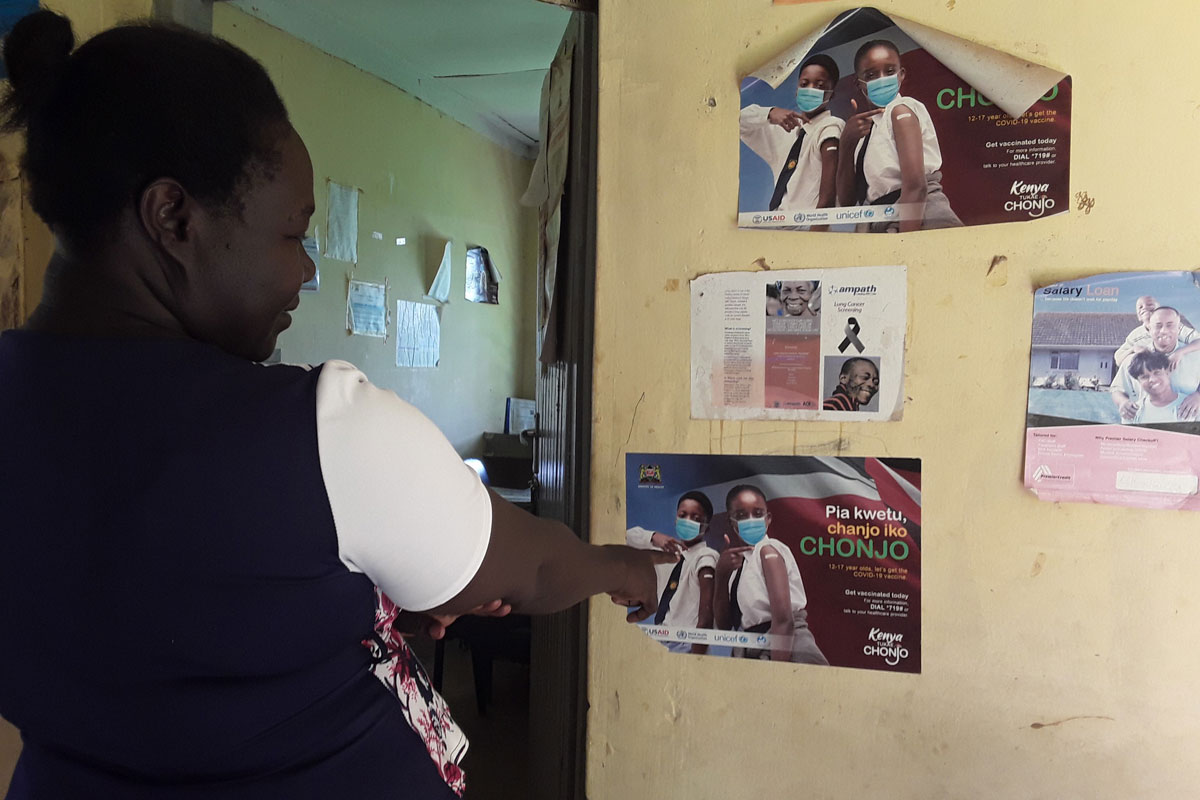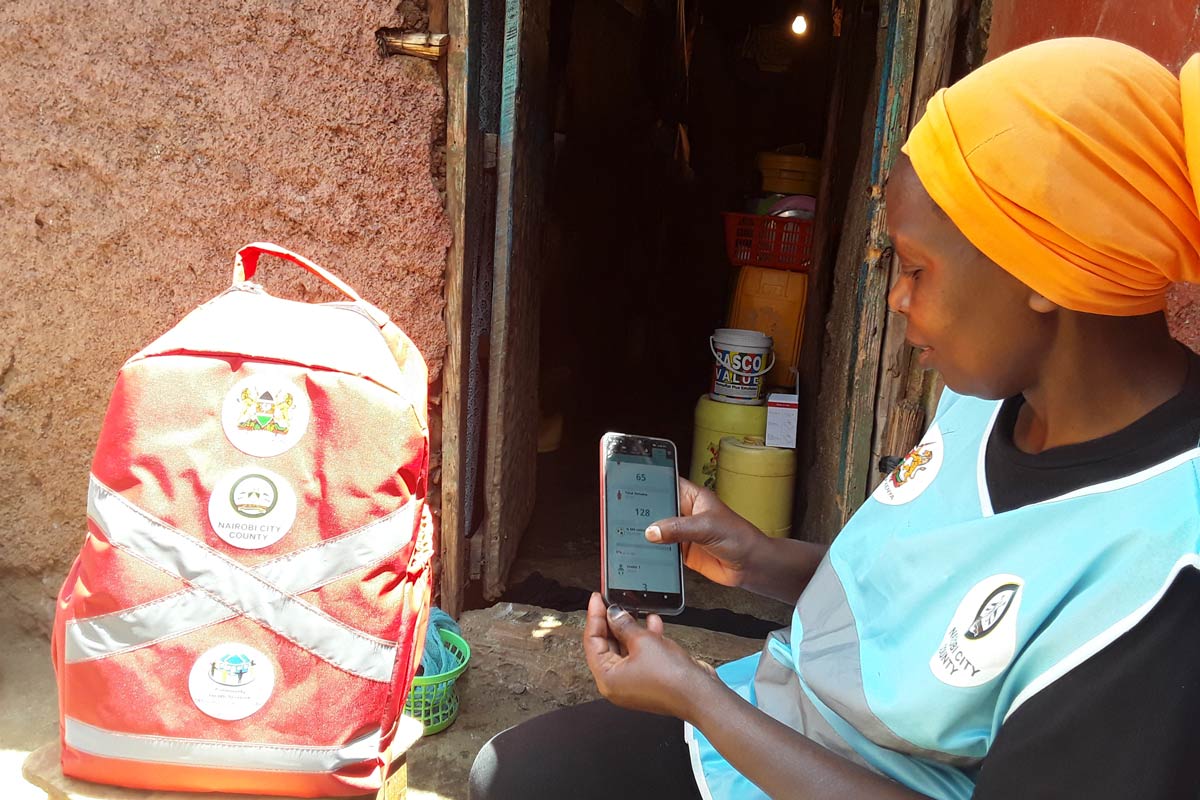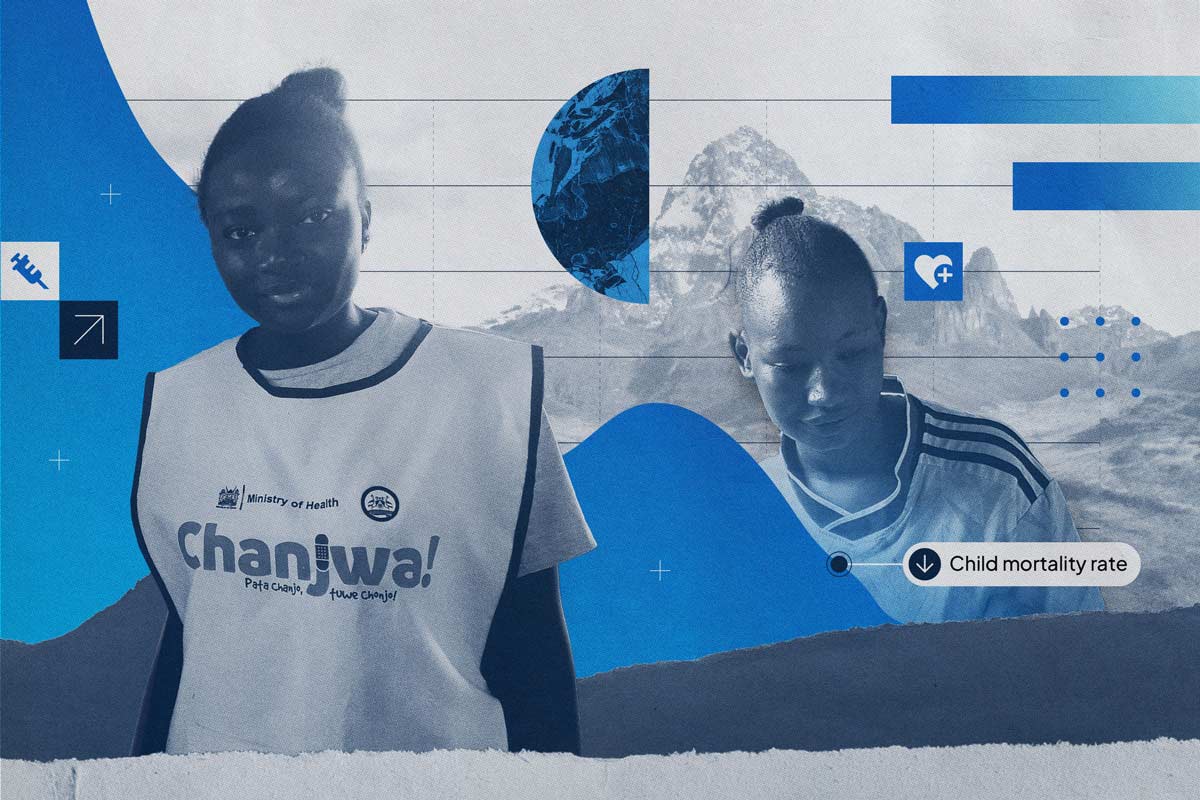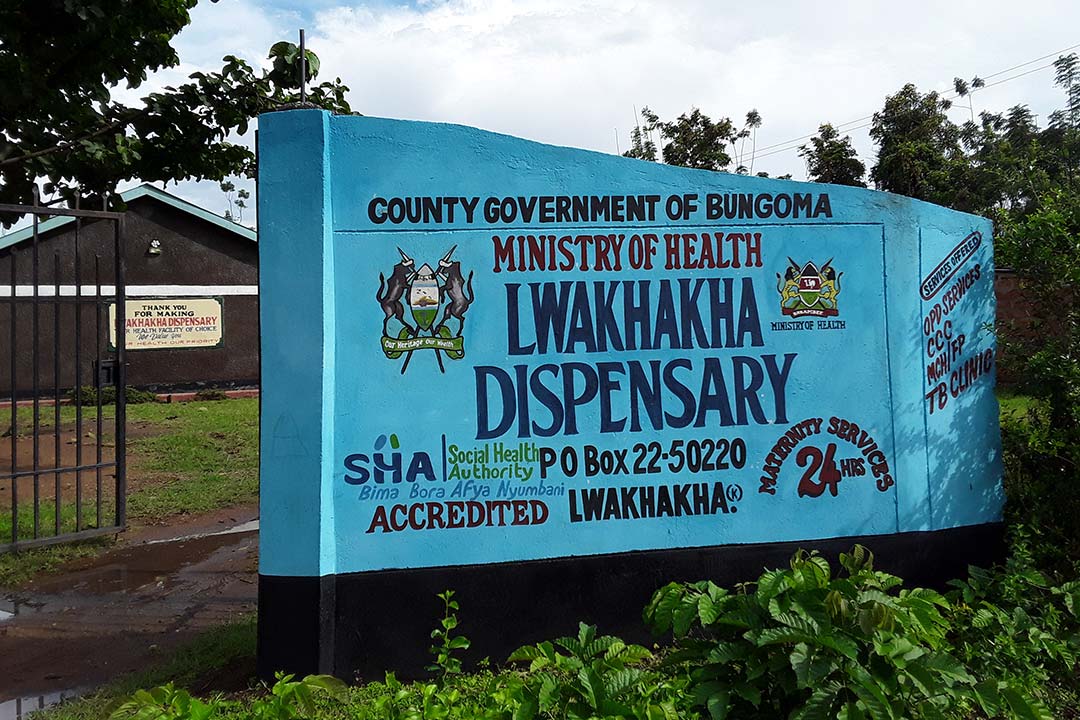“We are the foundation”: a community health worker’s story
Kenyan community health worker Margaret Odera, one of millions of often informal “grassroots doctors” staffing the base of the global health pyramid, diagnoses what ails primary health care.
- 1 November 2023
- 11 min read
- by Joyce Chimbi
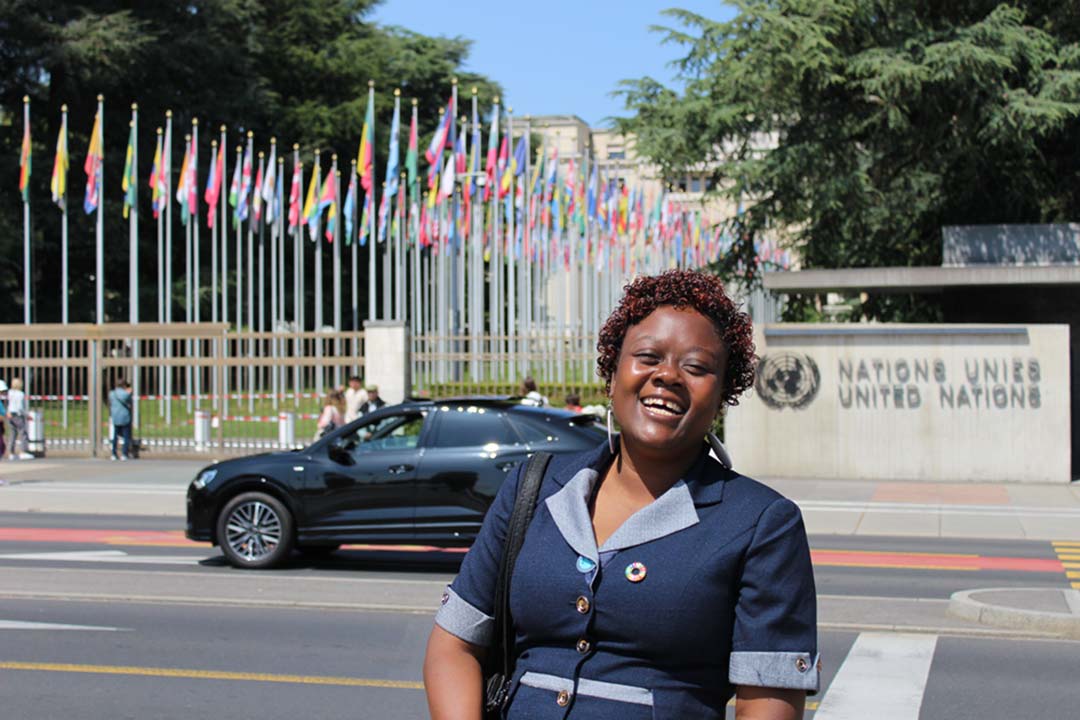
Margaret Odera, a community health worker (CHW), peer educator and mentor mother in Nairobi's Mathare North, was 29 years old when she developed a rash that wrapped around her waist like a belt.
She was alarmed, imagining it was due to a bad insect bite. She did not know that the belt-like breakout is a pattern common with shingles, a painful reactivation of the chickenpox virus, which can be a signal of HIV infection.
I am an HIV-positive mother of three HIV-negative boys. My husband is HIV-negative. I use my story to inspire others that discordant relationships work and elimination of mother-to-child transmission of HIV is possible.
– Margaret Odera, community health worker
She was diagnosed with the virus that year, in 2006. In shock and denial, she turned to a church in Nairobi, hoping for a miracle from a pastor who claimed to heal HIV/AIDS. Nearly all 2,000 congregants at the church were HIV-positive and hoping for a cure. Instead, all she found, she says, was despair and death. There were people there, she recalls, who committed suicide by throwing themselves in a swimming pool adjacent to the church.
The pastor told Odera that she was cursed and would die within two weeks. His so-called 'prophecy' proved to be the push she needed to turn her life around.
Odera remade herself as a survivor and voice for change. Not the HIV diagnosis, nor the trauma that followed the birth of her first baby at 32, nor the loss of that child six months later to pneumonia undid her. Instead, Odera resolved to become a symbol of hope for HIV-positive pregnant and breastfeeding mothers.
Credit: Kelly Warden/2023/GAVI
In 2009, the year she lost her first-born, she walked into Mathare North Health Centre in Nairobi as a patient. She never left. Today, Odera works with the facility as an integrated CHW and a champion for the Prevention of Mother to Child Transmission (PMTCT) of HIV/AIDS programme.
In 2023, Odera was invited to speak at a World Health Assembly side event called "Tackling Community Health Worker Programme Barriers". Wearing her uniform, she spoke with warmth and pride of her vocation, and with diagnostic precision of the systemic flaws she sees clearly from her vantage point.
Today, we are nearing elimination of mother to child transmission of HIV at [our] facility. Our positivity rate, or rate of HIV transmission from mother to child is less than 1%. All this has been possible due to the relentless work of CHWs who knocked door to door, every day, for many years encouraging women to abandon these harmful practices and come to the hospital.
– Margaret Odera, community health worker
A few months later, VaccinesWork caught up with her in Nairobi, to hear her insights after a decade serving her community.
Tell us about your community, Mathare North. Who do you serve here?
Mathare North is a semi-informal settlement, surrounded by four informal settlements, namely the Mathare 3 or Mradi, Matopeni, Jangwani and Mombasa Raha. Our catchment area is a population of about 200,000 people.
What does a typical day look like for you as a CHW, peer educator and mentor mother?
My day starts at 07:00 at Mathare North Health Centre where I give health talks at the newborn unit, antenatal clinic, outpatient department for general health, immunisation and comprehensive care units. I actively seek out HIV positive women at the facility and check the records for those that have defaulted from various services critical to the prevention of mother-to-child transmission of HIV/AIDS.
At 10am, I venture out and into the community, making door-to-door visits or keeping prior appointments until 14;00. From 14:00 to about 16:00, I prepare a report of the entire field visit and repeat the routine the next day.
Community health work is broad, as it involves raising awareness, mobilising and sensitising communities, detecting and making referrals to health facilities across all diseases. As a peer educator and mentor mother, my duties are more specialised and specific, because here I speak about an experience that I have gone through. I am an HIV-positive mother of three HIV-negative boys. One boy was born in 2013 and twins born in 2017. My husband is HIV-negative. I use my story to inspire others that discordant relationships work and elimination of mother-to-child transmission of HIV is possible.
How was your experience speaking as a CHW at one of the World Health Assembly's side events this year?
I was the only CHW who does door-to-door visits invited to this high-level global health platform f discussion. The theme was "saving lives, driving health for all" and I took the opportunity to speak my mind. I said there will be no health for all, no universal health coverage, global health security and no access to primary health care until the plight of CHWs is addressed. The World Health Organization's health sector structure includes CHWs, who are placed at the very bottom of the pyramid because they have the first direct contact with populations at the household level.
CHWs live and work in the community, and for the community, around the clock. This is a very critical role because pandemics and disease outbreaks start and end in the community. Unfortunately, the profile of a CHW is that they remain informal, unrecognised by the health system, unsalaried and they are basically un-institutionalised and non-professionals. By this I mean, they have no formal letter of appointment and no contracts. There is a diploma for CHWs, but specifically for CHW supervisors.
My message was, and still is: while we have the most positive impact on health at the community level, we remain ignored, isolated, unprotected and vulnerable. This impacts negatively on access to primary health care because we do not have the tools to deliver primary health services, save lives and drive health for all within the communities that we serve.
What are the gaps, and how should they be addressed?
CHWs are at best under-represented. We are generally not seen and heard even in spaces where CHWs are the topic of discussion. I am very pleased to have participated in the World Health Assembly but I want to see more CHWs at the table where critical discussions on global public health are being held, where stakeholders are discussing policy formulations and strategies, because in the house that is the health sector, we are in the basement and at the very foundation of this critical house.
Have you read?
I am saying that the house has large, gaping cracks and there is no need to look further for the problems ailing the health sector. The solution is to strengthen CHW systems because they are central to both preventive and curative health services and interventions.
In 2009, I was dismayed and in shock at what I saw in the community. More than 80% of HIV-positive pregnant women gave birth in the hands of traditional birth attendants (TBAs). The HIV positivity rate from mother to child was at least 98%. These mothers refused ARVs and embraced herbal concoctions. They believed that they were bewitched and ran to traditional medicine men, their immunity was very low and there was no escape for their babies who were vulnerable during pregnancy, birth and breastfeeding. While their HIV-positive babies wasted away, they claimed that the babies had been looked upon with a "bad eye" or bewitched.
I was particularly appalled by the rampant practice of removing 'plastic teeth', as it highly contributed to transmission of HIV to babies. Newborns at times have white things that look like teeth inside their gums. TBAs told mothers that those 'teeth' must be removed for the baby to be healthy. The process would leave the baby with wounds in the mouth, exposing them to HIV in the breastmilk from a mother who was not even on ARVs.
Today, we are nearing elimination of mother to child transmission of HIV at [our] facility. Our positivity rate, or rate of HIV transmission from mother to child is less than 1%. All this has been possible due to the relentless work of CHWs who knocked door to door, every day, for many years encouraging women to abandon these harmful practices and come to the hospital. Remove CHWs from the equation and see populations shun modern medicine and slide back to tradition.
Why have CHWs remained isolated and largely unsupported within the health sector?
It is because more than 70% of CHWs are women. The African society expects women to serve unconditionally and without expecting any incentive, pay or reward, the same way women are expected to take on caregiving and household chores because that is their job. It is a corporate injustice against women and blatant gender discrimination within the health sector. Yet, mothers and babies are the backbone of any health facility. Women CHWs are more effective in areas such as maternal health and family planning because they have lived experiences and have significantly contributed to positive maternal health trends.
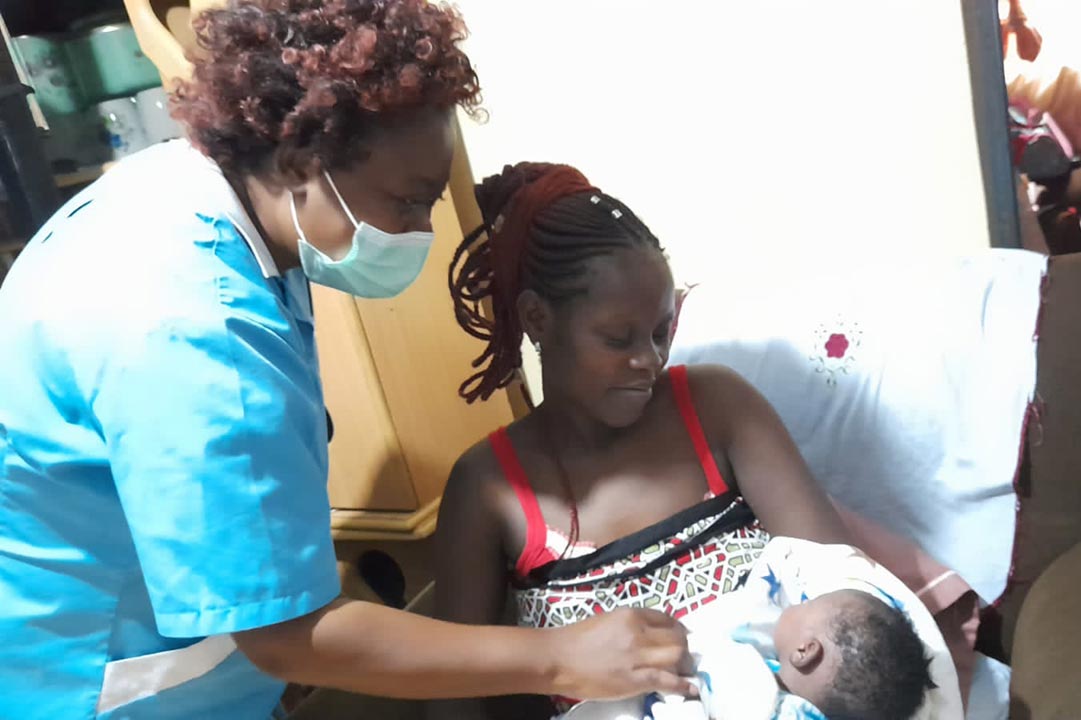
Credit: Margaret Odera
Despite the impact we have on community health, we are still seen as informal workers doing menial work and undeserving of formal recognition and decent compensation. CHWs first entered Kenya's health sector in 1988 and despite our track record in combatting pandemics and endemic diseases such as malaria, TB, HIV/AIDS, cholera and polio, we have always been volunteers. We have had no equipment apart from pen and paper, and no salary all these years.
Had 70% of CHWs been men [rather than women], they would have received employment contracts and a decent salary years ago. The health system is blind to the needs of women CHWs.
During COVID-19, women CHWs were moving within communities without protective gear and we were highly vulnerable. We look after the sick in our own households and in the community without any support or incentive. Many of us can barely put food on the table. Some have been victims of sexual and gender-based violence. We visit people in the privacy of their homes, and at times you will encounter a man and rape cases are not uncommon.
The society and our cultures have a very low place for women despite the undeniable and impactful role we play in caregiving and access to primary health care. The health sector looks at women CHWs through this lens. We have the answers to what is needed to improve the situation of CHWs and improve access to primary health care. All we need is a platform to speak our mind.
Is there progress in the right direction?
We are beginning to put forward a united front. I started a WhatsApp group under the name Community Health Workers Champions Network to bring together all 100,000 CHWs from across the country. I believe we have enough CHWs and all that is needed is a proper survey and mapping to ensure that we are all integrated in the health system. Thus far, we have brought CHWs from 46 out of Kenya's 47 counties under one umbrella, and we are on track to ensure that all CHWs are accounted for.
We have engaged in a concerted advocacy effort to speak about the challenges, barriers and opportunities in our way and the government has started to pay attention. We received contracts for a small monthly stipend earlier in the year. It is small, US$ 25 (3,500 Kenyan shillings), but better than nothing.
Our message remains clear – there is nothing for us, without us, and that it will take the strengthening of CHW network to deliver primary health care, universal health, guarantee global health security and save lives.
– Margaret Odera, community health worker
In September 2023 the government took us through a digital training exercise and has recently given us a bag with the digital tools that we need such as a glucometer, weighing scale, thermometer, cord clamps or a nipper to tie the umbilical cord to stop blood flow from placenta to foetus during an emergency delivery outside a health facility, a torch, tea thermos and importantly, a digital phone with an app that allows us to populate and submit data.
The government is therefore accelerating plans to digitise all CHWs. We no longer have to rely on pen and paper, which are disease carriers, or do the cumbersome report writing, because data is transmitted digitally to a central government system. The app is called the Electronic Community Health Information System (eCHIS-Kenya) under the Ministry of Health. The government can make very timely decisions about public health based on the data we submit on a daily basis through the system. This is critical towards detecting and responding to disease outbreaks.
The President of Kenya has recently started speaking to the community about CHWs, telling them that we are grassroots doctors, which is giving us the legitimacy, professional recognition and respect needed to deliver services and have a lasting impact on the communities we serve. All these developments have emerged out of our push for representation. Our message remains clear – there is nothing for us, without us, and that it will take the strengthening of CHW network to deliver primary health care, universal health, guarantee global health security and save lives.
Read more: CHWs as vaccinators
Community Health Workers as Vaccinators: A Rapid Review of the Global Landscape, 2000–2021 – Global Health Science and Practice
Leveraging community health workers as vaccinators: a case study exploring the role of Malawi’s Health Surveillance Assistants in delivering routine immunization services – National Library of Medicine
These are the community health workers who are the heartbeat of global primary health care – Unicef
Opinion: Amid labor shortage, let community health workers give vaccines – Devex
More from Joyce Chimbi
Recommended for you




